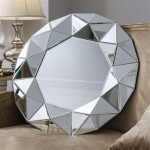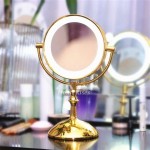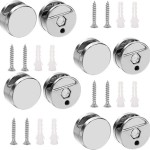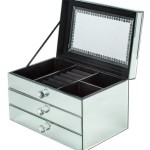How High Do You Hang a Mirror Over a Bathroom Vanity?
Hanging a bathroom mirror at the correct height can significantly impact the functionality and aesthetics of the space. A well-placed mirror improves the room's usability while contributing to the overall design. Several factors influence ideal mirror placement, including the height of the vanity, the ceiling height, and the users' heights.
Consider the Height of the Vanity
The vanity height serves as the primary baseline for determining the mirror's position. Standard vanity heights typically range from 30 to 36 inches. The bottom edge of the mirror should be a few inches above the backsplash or countertop, generally allowing for a 5-10 inch gap. This spacing prevents water splashes from staining the mirror's bottom edge and provides visual separation between the vanity and the mirror.
Factor in the Ceiling Height
Ceiling height plays a crucial role in creating a balanced and proportional look. In rooms with lower ceilings, hanging the mirror slightly higher can create an illusion of more space. Conversely, in rooms with high ceilings, the mirror can be positioned a bit lower without overwhelming the vanity area. The goal is to achieve visual harmony within the overall bathroom design.
Accommodate the Users' Heights
While standard measurements provide a good starting point, considering the users' heights ensures optimal functionality. The ideal placement allows everyone in the household to comfortably use the mirror without excessive stooping or straining. If there is significant height variation among household members, consider a larger mirror to accommodate everyone's needs.
Choose the Right Mirror Size
Mirror size should be proportional to the vanity's width. A general rule is to choose a mirror that is slightly narrower than the vanity itself. This creates a balanced look and prevents the mirror from visually overpowering the space. For double vanities, a single large mirror or two individual mirrors can be used, depending on the desired aesthetic.
Think About Lighting
The mirror's position should also take into account the existing bathroom lighting. Ideally, the mirror should be positioned to reflect light effectively, enhancing visibility and brightening the room. Avoid placing the mirror directly opposite a bright window, as this can create glare. Consider installing sconces or overhead lighting fixtures to complement the mirror and provide adequate illumination.
Account for Wall Obstructions
Before hanging the mirror, carefully assess the wall for any obstructions, such as light switches, electrical outlets, or plumbing fixtures. These elements may necessitate adjustments in the mirror's placement to ensure proper clearance and avoid interference with functionality. Careful planning prevents unnecessary drilling and potential damage to the wall.
Utilize a Template and Level
Using a template or painter's tape to mark the mirror's desired position on the wall is highly recommended. This allows for visualizing the placement and making adjustments before permanently affixing the mirror. A level ensures that the mirror hangs straight, preventing a tilted or uneven appearance. Double-checking the measurements and using appropriate hanging hardware ensures secure and stable installation.
By carefully considering these factors, individuals can determine the optimal height for hanging a bathroom mirror over the vanity, achieving both functionality and aesthetic appeal in their bathroom space.

How High Should You Hang The Mirror In A Bathroom With Photos Design Morsels

How To Pick And Hang The Perfect Bathroom Mirror Roomhints

Guide To Hanging Bathroom Vanity Lighting And Mirrors Liven Design

Bathroom Mirror Size Calculator

How High To Hang A Vanity Mirror Sparrow Stoll

How To Pick And Hang The Perfect Bathroom Mirror Roomhints

How To Pick And Hang The Perfect Bathroom Mirror Roomhints

How High To Hang A Vanity Mirror Sparrow Stoll

How High To Place Your Bathroom Fixtures Inspired Style

How High To Place Your Bathroom Fixtures Inspired Style








